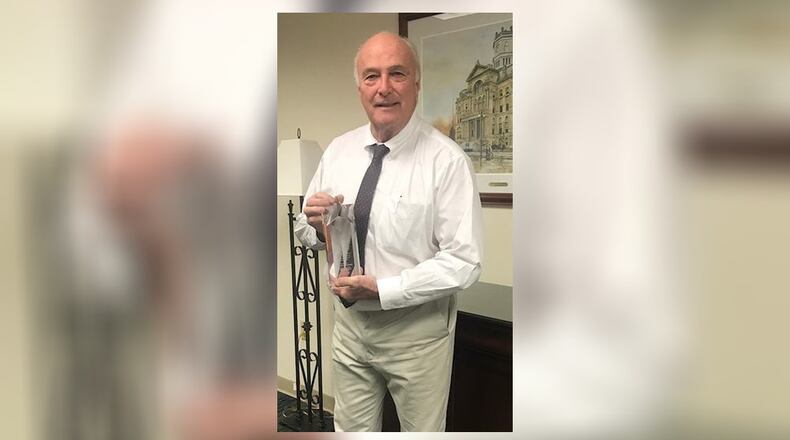The Coalition noted what Gmoser pointed out to be a “silver bullet” during final closing arguments — a 27-second call placed from a phone registered to Tucker’s Kentucky girlfriend to Parker’s house on Dec. 27, 2015.
“That is the call from Tucker checking in to find out if the deal was still on,” Gmoser said.
RELATED: Parker, Tucker sentenced to life in prison for murder of fallen firefighter
Parker was convicted of conspiring with Tucker to set his house on fire for insurance money and Tucker was convicted of setting the blaze for payment in pain pills in November 2017. Wolterman died after falling through the floor of Parker’s house while fighting the blaze.
Gmoser was also was honored by the Coalition for creativity and determination in using pacemaker data to bring an indictment against Ross Compton, the accused arsonist who allegedly burned his Middletown house to the ground in 2016. His trial is set for early March.
Jim Quiggle, director of communications for the coalition, which is is a non-profit national alliance of consumer groups, insurance companies and government agencies fighting all forms of insurance fraud, said this award was created especially for Gmoser.
Gmoser, who has practiced law on both sides of the bar for decades, said technology has “made it magnificently easier” to prosecute cases, especially with the perfection of DNA analysis. He hearkened back to the days when George Orwell warned about big brother and everyone was “aghast.”
He said today it’s not just the government that can keep tabs on people, other people have become evidence gatherers themselves.
MORE: Man whose pacemaker data was used in his arrest ruled competent to stand trial
“We have a general public that is able to whip out a video camera in their digital phone and take a picture of something that happened three seconds ago, or maybe they have it before it happens and we have not only the shooting but moments before the shooting on somebody’s cell phone,” he said. “That is the transition from the old way of thinking, the evolution.”
Gmoser said it was a group decision between his office and police to go after the pacemaker evidence, the idea wasn’t his but the decision to use it was. The case is believed to be the first of its kind to use data from a beating heart as evidence.
“We were all part of the idea that yeah, this is good stuff, let’s play it out, let’s see where it takes us, this is good,” he said. “You could have had a prosecutor that said no that’s too techy, nobody will buy into it… Am I the prosecutor that said we’re doing this, this is evidence and we’re going to go with it, yeah you’re darn right.”
The data taken from Compton’s pacemaker included his heart rate, pacer demand, and cardiac rhythms before, during and after the fire. The pacemaker evidence didn’t match what Compton allegedly told police about what he was doing at that time: packing and toting heavy bags and climbing out a window.
Defense attorneys face the same issues. Tamara Sack, who represented Tucker, said technological evidence has forced them to find the right experts to testify about those unique situations.
“We have to have experts who challenge the so called cell tower pingings. There is a whole science to this and I keep myself very apprised not only of the law but the technology to both combat and understand the cell phone and technology issues,” she said. “Sure it’s hard, but it’s part of being current with the times.”
Bother Tucker’s and Parker’s cases are on appeal in the 12th District.
About the Author
